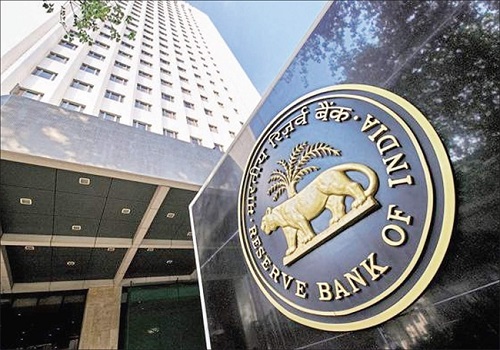The Most Common-sensical of All: RBI Policy Aug 22

The MPC hiked policy rates by 50 bps, thereby taking the repo rate to 5.40 per cent, while retaining stance as 'focussed on withdrawal of accommodation'. While the action was unanimous, Dr. Varma dissented on stance, presumably consistent with his long expressed view that the MPC should retain flexibility with itself.
While the action itself was towards the hawkish end of expectations, the retention of stance can probably be deemed as the mitigating factor; insofar that it probably means that RBI will continue to anchor overnight rate at SDF (instead of nudging it towards repo).
Assessment
We must start with an observation that the more we see of Governor Das, the more we get impressed with his common-sensical and largely proactive approach to policy. To clarify, this doesn't mean we haven't had previous differences with RBI's approach (https://idfcmf.com/article/7757 ).
However, given the complexity of the environment and the multiple pushes and pulls in play, we can't help but express admiration for the skillful navigation of policy that Governor Das seems to be helming, both in not going overboard during the pandemic response time and now with a proactive approach to normalisation.
The backdrop for the current policy was some decided alleviation in global financial conditions pressure. Broadly speaking the middle of June had marked the peak pricing on global monetary tightening. Since then, signs of 'breakage' in global growth have become more evident alongside a (consequent) almost broad based fall in commodity prices. Also the strength in the dollar index has abated somewhat.
One path RBI / MPC could have chosen is to therefore calibrate their response further and emphasize the reduction in pressures. The more common-sensical one, however, is what ultimately got chosen: persist with the frontloading of normalisation, acknowledge the mitigating factors on inflation while at the same time note risks, and refocus attention on the fact that despite signs of easing inflation remains above target.
In the process, RBI has reminded us that it remains an inflation targeting central bank. Even as our external strengths and strong fundamentals are described as supporting the rupee, the action will speak at least as loud as words. To clarify here, we still believe the argument for offering an interest rate defence for currency reasons is flawed in the current context.
Nevertheless, a central bank going about its primary business in a methodical, proactive way is a source of comfort as far as perception is concerned. The other standout from both the policy and the subsequent press conference is the deliberate avoidance of any sort of guidance at all on future monetary policy actions.
The macro-economic assessment notes the strength of our concurrent growth indicators while acknowledging external headwinds. Basis these the growth forecast is retained at 7.2 per cent with the same quarterly distribution as before. This also looks to be one of the points of comfort with persisting with upfronting normalisation of monetary policy.
While we also acknowledge the strength of concurrent indicators, our own view on growth remains somewhat more pessimistic. The export sector was a major contributor to aggregate demand in the post pandemic recovery phase. This in turn was helped by the aggressive rebound in developed markets largely owing to the (irresponsibly) large fiscal and monetary stimuli administered in many of these economies.
Now these same excesses have come home to roost in the form of untenably high domestic inflation (over and above the effect from supply chain congestions, commodity shocks etc which have been a global problem). With accommodation now being speedily removed in these economies, alongside other shocks owing to geopolitics, growth is falling off sharply. This is already beginning to reflect in our exports, and we expect this to continue being a drag into the foreseeable future.
India's local headwind from balance sheet issues that have persisted for most of the last decade are now behind us and therefore we are structurally better poised for growth. However, this is an argument for better relative growth rather than a continued sustenance of the growth momentum that RBI seems to be currently taking comfort from. In fact, apart from the effect of commodity prices, our current account may be facing the same problem of better relative speed for our economy for now when compared with many other parts of the rest of the world.
On inflation, despite an undershoot of earlier projections in the first quarter as well as recent benign developments in commodity prices, RBI has retained its full year forecast at 6.7 per cent. However, there are some interesting takeaways from 'under the hood'.
For Q2 FY 23, RBI has retained 7.1 per cent forecast despite Q1 having undershot and some commodity prices having fallen. Thus they seem to be building some cushion here. Further, with a 20 bps hike in Q3 forecast to 6.4 per cent their second half FY23 forecast is now closer to what the market may be expecting. Thus, unlike when the 6.7 per cent forecast was first made in June, market may find the current forecast more realistic. Further, Q1 FY24 forecast has been revealed at 5 per cent.
Going Forward
Our thinking purely with respect to the current policy was that once the repo rate is taken above the pre-pandemic level of 5.15 per cent, stance will be moved to neutral. Going by Dr. Patra's comments in the post policy interaction in June, we had assessed that with stance turning neutral RBI may make efforts to anchor overnight rate towards repo rather than SDF.
Thus we were expecting an effective rate hike higher than what the movement in repo rate would be. However, what has turned out is somewhat different. Stance has continued as withdrawal of accommodation, thereby de-linking it completely from the level of pre-pandemic repo rate.
Presumably, overnight rate continues to anchor to SDF rate (which is now at 5.15 per cent). Thus the effective hike is very much in line with expectation, even as overnight rate has also started to reflect somewhat more volatility reflecting the lower average banking system liquidity currently.
To clarify, however, the headline liquidity currently is being constrained by extra-ordinarily high government cash balances. The so-called core liquidity remains comfortable, even as it has come off substantially since late last year reflecting rise in currency in circulation and some shrinkage in RBI balance sheet.
From a global standpoint, and as noted above, rate hike expectations peaked in mid-June and have since moved down notably as growth breakage has progressed. In India as well CPI seems to have peaked and the full effect of the recent commodity price falls seem to be still in play.
Furthermore, in our view India will inevitably have to start reflecting the global slowdown even as it remains a relatively better performer. We note this in context of the explicit reference by the Governor in the post policy conference that the resilient economic activity is giving RBI space to act.
Deputy Governor Patra also referred to the normalisation journey now having two distinct components: policy rate rising and inflation falling. Further, RBI leadership continues to emphasise that demand pull isn't a significant factor in local inflation, referring to the responsible approach followed in the pandemic response (a point which is an integral part of our current macro-economic and policy view framework).
Finally, and rather cryptically, Dr. Patra referred to the path to neutral rate as being a 2 milestone journey: inflation falling to neutral band and then aligning to target.
All in all, we are comfortable that global and local developments are proceeding largely in line with our framework (https://idfcmf.com/article/8439). We reiterate our long held expectation that effective overnight rate peaks below 6% in this cycle.
Over the last few weeks most market expectations seem to be converging to this view. Basis the pace of breakage globally, and assuming most of the current commodity price fall off sustains, we are even comfortable with assigning 5.75 per cent as our peak effective overnight rate expectation.
Market's disappointment today is the complete lack of guidance. But so long as the progression of global macro data remains consistent with what we are witnessing today, one shouldn't need too much of guidance to begin forming a more benign view on where this cycle peaks out.
We reiterate our preference for 4 - 5 year government bonds. At an effective peak funding rate of 5.75 per cent, this leaves approximately a 125 bps term spread on these yields (at the time of writing) which is quite comfortable. The ongoing flattening between 4 years and 1 year is consistent with our view.
What isn't happening yet, but we expect it to, is the 4 years to 10 year spread opening up as market better prices in the heavy bond supply ahead. This is another reason why we think 4 - 5 year government bonds offer the best risk-reward on the yield curve.

















